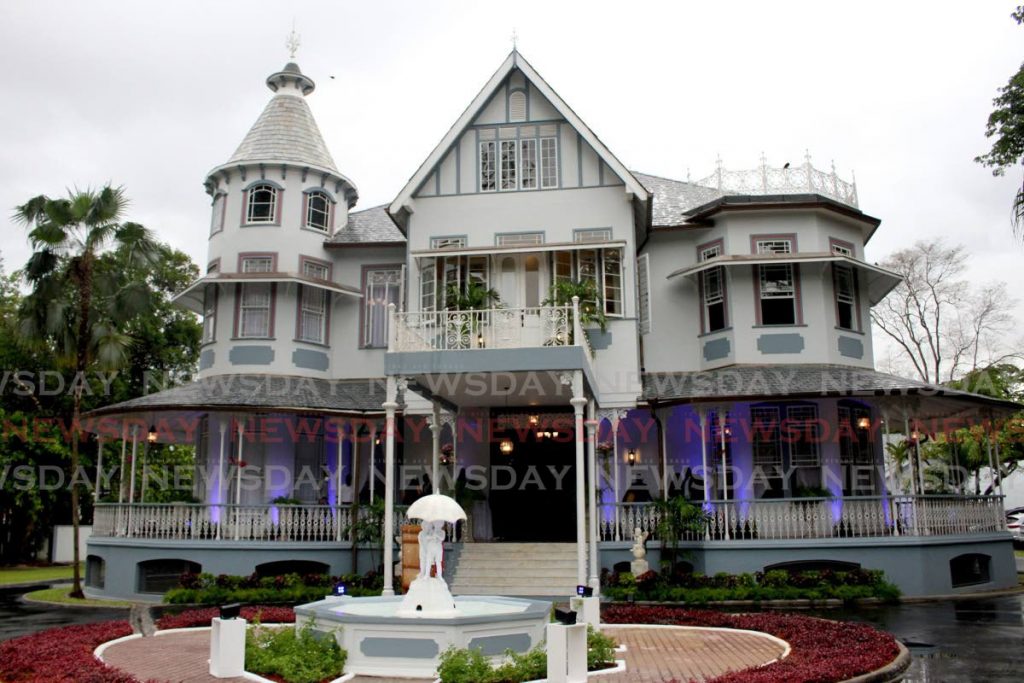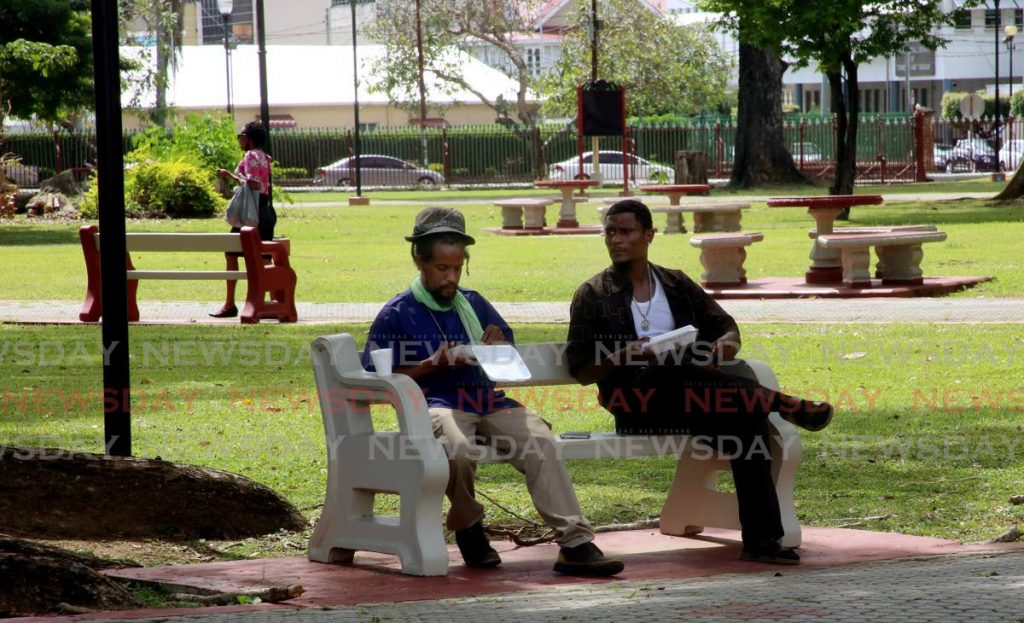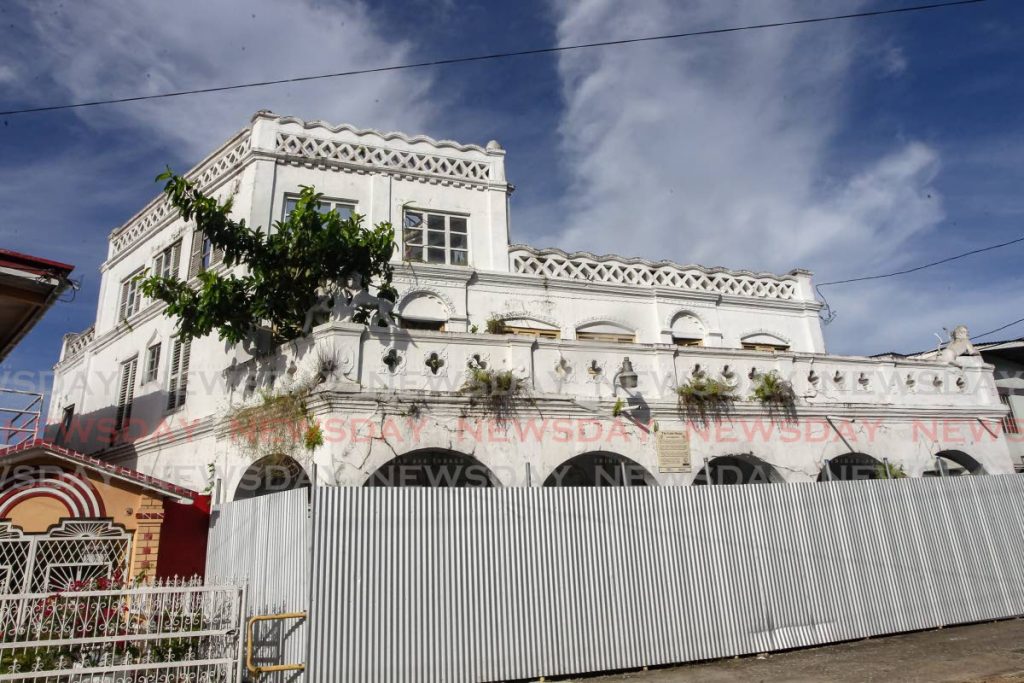Preserving TT's heritage...one brick at a time

MILLE FLEURS, one of the Magnificent Seven buildings around the Queen’s Park Savannah, Port of Spain, was created by Scots architect George Brown. It was built in 1904 by the Prada family and changed hands three times before government bought it for approximately $1 million in 1979.
In 112 years, it degraded, owing to disuse and neglect. In April 2016, Cabinet commissioned Udecott to renovate and restore Mille Fleurs. The work cost approximately $10 million. In August, Mille Fleurs was declared the home for the National Trust.
Newsday spoke with Margaret McDowell, the trust’s chairman, about its history and ability to preserve culture.
The National Trust Act was passed in 1991 and proclaimed in 1999. The trust's mission is to identify properties and landmarks deemed historic, with the aim of preservation.
The trust started off as two people in the National Museum and Art Gallery. Its chairman until 2013, Vel Lewis, was the curator of the museum. The trust’s first CEO, Shamila Ramcharan, was recently appointed.
The trust has fallen under various ministries but is now under the Ministry of Planning and Social Development. McDowell said this was the right fit.

“It’s a ministry that’s development-oriented. They have a wider range of interests, so we can get the listing process facilitated better and do development projects,” McDowell said.
She joined the trust in November 2014 as vice chairman. In September 2015, the trust’s appointed members had to resign when the government changed. For more than a year, no work happened. In November 2016, McDowell was appointed chairman, along with a new board.
“Everything was stopped and started and stopped and started,” she said.
There were no general meetings between 2014 and 2016 because there were not enough members. Until 2015, there were never more than four staff members at the trust, who mostly did administrative work.
Now it has 16 staff, with four heritage preservation officers, a research officer, an OJT and administrative staff.
Listing heritage sites
To be considered a heritage site, a building must be over 50, and have a special quality – it could be the design, or the history of the building.
The trust has a heritage asset inventory of 463 spots deemed historic and worthy of preservation on its website. Not all on the inventory are protected under the National Trust Act.
Stage one of listing is nomination and gathering information on the site. There are 131 sites at this stage, including Flanagin Town Railway Station in Tabaquite, the Mahatma Gandhi statue on Harris Promenade in San Fernando and St Jude’s Anglican Church in Sangre Grande.
Stage two is identification and inclusion on the heritage site inventory. There are 271 of these, which include the Bamboo Cathedral in Chaguaramas, the Botanic Gardens in Port of Spain and painter Michel-Jean Cazabon’s grave in Lapeyrouse Cemetery, Port of Spain.
President’s House is the only building at stage four, which is the preparation of a dossier. This notes the history, uniqueness, natural or outstanding beauty, artistic aesthetics, scientific attributes, and international repute.
The trust’s website shows no sites in stages three, five or six.
At stage seven, a notice of intention has been published in the TT Gazette; the owners have been informed and the intention to list has been published. The Naipaul house in St James, Ortinola House in St Joseph and Woodford Square in Port of Spain are at stage seven.
At stage eight, the property is listed, and the site is protected under the act.
Mille Fleurs, the Old Mayaro Post Office and Banwari Trace in Siparia (the oldest archaeological site in the West Indies, dating back to 5,000 BC), are considered grade one sites where there should be no change or alteration that may deform or deface the site.
Where properties of interest are not listed, the trust tries to get more information and public opinion on them. McDowell said speaking to the public and educating them about the value of preserving sites is more effective than the law.
Only 43 properties have been listed as heritage sites and protected by the trust to date. With a historically small staff, the trust struggled to get sufficient information to list sites. There's a detailed process for listing: legal research, drawing of the site, creation of a dossier. It takes about a year to list a site.

The trust listed its first 13 sites between 2013 and 2014. Thirty others were listed in October 2019 and 30 between 2018 and 2019.There is a $5,000 fine for altering, defacing, demolishing or destroying a listed property. If it's destroyed, the court can make the responsible party rebuild the site, but it would not be the original.
“We should not have the penalty so low...We need powers to do tax breaks and fiscal incentives and customs-duty exemptions. Those are the kinds of things that would help. They don’t have to be in acts, but in regulations.”
Maintaining history
In TT many people do not know how to maintain old buildings. In countries where heritage is preserved, McDowell said, people go to the national trust to report a deteriorating heritage site.
“In those places, the country believes in their heritage, and they protect it and police it. Our act is built as if that is how we are – but it is not so. We don’t have the kind of regulatory powers that we would really need to ensure people would preserve the sites.”
For buildings older than 50, McDowell says people should contact the trust to determine if the site is worth preservation. However, the trust has no legal powers to stop people from demolishing or altering a property; all it can do is lobby for preservation.
Under the act, the trust is exempt from all customs duties, stamp duty and VAT on goods imported for official use or for TT works of art, but the exemption does not extend to private listed properties.
McDowell hopes to stimulate preservation of architectural heritage through the property tax. The trust wants to recommend owners of heritage buildings get a tax rebate if the building’s integrity is maintained.
McDowell also wants waivers on duties on imported material used specifically for heritage sites, such as lime mortar, which must be imported from Barbados. The waivers, she said, would reduce the cost of maintenance.
The trust is putting together a proposal for the property-tax waiver and is yet to approach Finance Minister Colm Imbert.
“This is a good incentive. I prefer to have an incentive than penalty.”
Old buildings are not well maintained in TT, McDowell said, and this lack has caused buildings over 50 to become dilapidated.
The Lion House in Chaguanas is not listed as a heritage site. It is on stage two of the listing. If the Lion House is torn down, the trust has no legal power over its preservation.
Built between 1924 and 1926, it is the Capildeo family’s ancestral home. The family included Pundit Capildeo, politician and mathematician Rudranath Capildeo, and Droapatie Capildeo, wife of Seepersad Naipaul and mother of VS Naipaul.
The trust’s website also describes the Lion House as a memorial to the indentured Indian immigrants who came to Trinidad between 1845 and 1917.
After 106 years, the Lion House needs a lot of repair work. The trust's ability to help is limited, as the Lion House is privately owned.

“We can advise. Because it is a private property, we can’t go in and make orders. We would have to acquire it,” McDowell said.
Even if the trust owned the property, money is a limitation.
“We don’t have money to spend. It is better for us to encourage people who really want to help in restoration.”
Members of the public and the Chaguanas Borough Corporation expressed interest in helping restore the Lion House.
For old buildings, the trust has a large database of heritage professionals who can advise people on how to care for them.
For instance, “We don’t advertise it sufficiently, but we give advice. If somebody has a house, and it’s a wooden house, they painted it and they are seeing termites, we can come in. They are probably using the wrong paint. Your wood is getting wet. We discovered termites don’t attack dry wood. They attack wet wood.”
McDowell wants the trust to set an example with Mille Fleurs of how sites can be maintained.
“We can show people how maintenance is done. You don’t wait until it falls apart and then fix it. You’re maintaining it every day. Some things have to be done every year, some things every five years, and if we are really lucky, and we start making money, we can move on to helping other buildings.”


Comments
"Preserving TT’s heritage…one brick at a time"